What is a Polo Shirt? A Complete Guide
Polo shirts represent wardrobe essentials that offer casual sophistication through their combination of relaxed comfort and elegant design. They remain popular thanks to their soft collar, buttoned placket, and breathable fabric, which work well for both sports and business casual settings. So why do polo shirts remain so popular among people? Let us explore polo shirts by studying their historical development along with their categories, styling tips, fabric options, and maintenance recommendations.
History of Polo Shirts
History shows that polo shirts developed in the late 19th century. During the late nineteenth century, British officers and tea traders in Manipur, India, wore bulky long-sleeved cotton shirts for polo matches. The original polo shirt design emerged when soldiers added buttons to their collar fabric to stop flapping movements during matches.
René Lacoste, a French tennis pro, gained recognition as the creator of today's modern polo shirt. Lacoste developed his groundbreaking style of shirt through his 1926 creation, which featured short sleeves, a flexible unstarched collar, and a buttoned front for enhanced court movement capability. His design became so popular that it spread from polo matches to golf courses and then into everyday casual wear. The polo shirt has become a worldwide popular option for both style and practicality in daily dressing.
The Difference Between Polo Shirts and Other Shirts
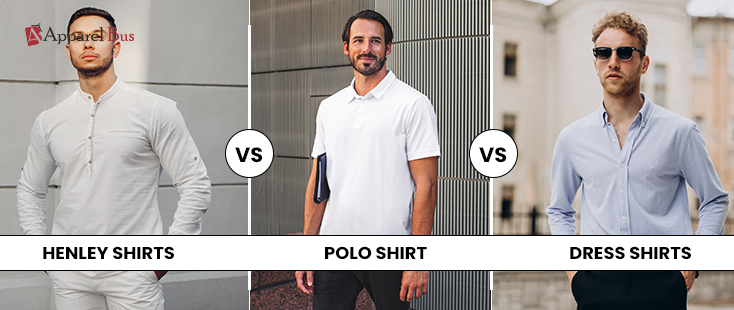
While polo shirts share some similarities with other shirts, they have distinct characteristics that set them apart:
- Polo Shirts vs. T-Shirts: The distinctive features of polo shirts differentiate them from t-shirts since they include a structured collar and buttoned placket around the neckline, while also lacking t-shirts' round or V-shaped neckline.
- Polo Shirts vs. Dress Shirts: The difference between polo shirts and dress shirts surfaces when you compare their materials and their intended use, because dress shirts use woven cotton and require ironing for formal events. Polo shirts exist as a different casual garment versus regular t-shirts since they are developed using stretchable knit fabric with a soft and flexible construction.
- Polo Shirts vs. Henley Shirts: The Henley shirt maintains its placket design from polo shirts and omits collars to create a laid-back, rugged appearance.
Types of Polo Shirts
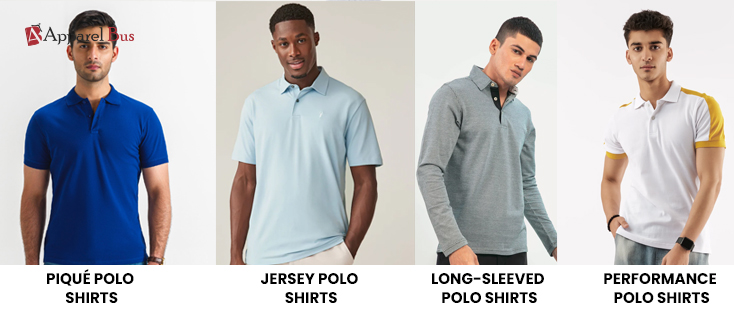
Polo shirts come in different styles, each suited for various occasions and preferences:
-
Piqué Polo Shirts
Made from textured cotton fabric called piqué, these shirts are breathable, durable, and structured. They offer a classic, slightly rugged look, making them ideal for sports and smart-casual wear.
-
Jersey Polo Shirts
Crafted from smooth, lightweight fabric, jersey polos are softer and more relaxed than piqué polos. They drape well and are great for casual, everyday wear.
-
Long-Sleeved Polo Shirts
Perfect for cooler weather, these provide added warmth and a more formal alternative to short-sleeved polos. They pair well with blazers and jackets.
-
Performance Polo Shirts
Designed for athletic activities, these polos are made with moisture-wicking and quick-drying materials like polyester blends. They keep you cool during sports like golf and tennis.
How to Wear a Polo Shirt
Polo shirts are incredibly versatile and can be styled in different ways:
- Casual Look: Wear a classic piqué polo with jeans or chino shorts and sneakers for a laid-back yet stylish outfit.
- Smart Casual: Tuck a fitted jersey polo into tailored trousers and pair it with dress shoes for a polished, professional look.
- Layering: During colder months, layer a long-sleeved polo under a blazer or sweater for a refined yet cozy ensemble.
Polo Shirt Fabrics & Material Choices
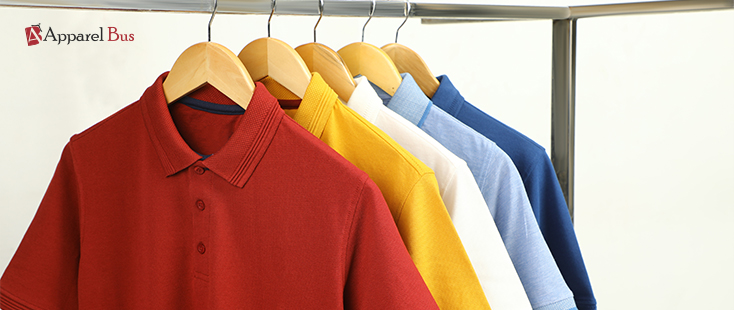
The fabric of a polo shirt significantly affects its comfort and durability. Here are some popular options:
- Cotton Piqué: Known for its textured weave, it provides breathability and a structured look.
- Cotton Jersey: A softer, smoother fabric that offers a more casual fit.
- Blended Fabrics: A mix of cotton and synthetic fibers for added stretch, moisture-wicking, and durability.
- Polyester & Performance Fabrics: These materials are best for sportswear, offering quick drying and sweat resistance.
Polo Shirts for Different Occasions
The adaptability of polo shirts makes them perfect for multiple settings:
- Sports: Performance polos are lightweight, breathable, and wick away sweat, making them ideal for golf, tennis, and other outdoor activities.
- Casual Outings: A classic cotton polo paired with shorts or jeans gives off an effortless, everyday look.
- Business Casual: In relaxed office environments, a well-fitted polo tucked into chinos or dress pants offers a professional yet comfortable style.
How to Care for Your Polo Shirt
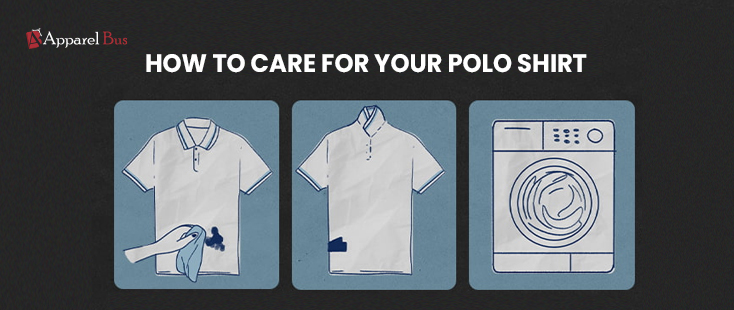
To keep your polo shirts looking fresh and lasting longer, follow these care tips:
Washing: Turn the shirt inside out and wash in cold water with similar colors to prevent fading.
Drying: Air dry or use a low heat tumble setting to avoid shrinking.
Ironing: Use a low setting and avoid direct heat on logos or embroidery to prevent damage.
Conclusion
Polo shirts are a must-have for any wardrobe. Their blend of comfort, elegance, and versatility makes them suitable for everything from sports to business casual settings. Whether you prefer a classic piqué polo or a sleek performance version, there’s a style for everyone. Looking to upgrade your collection? Explore our premium range of polo shirts and find your perfect fit today!




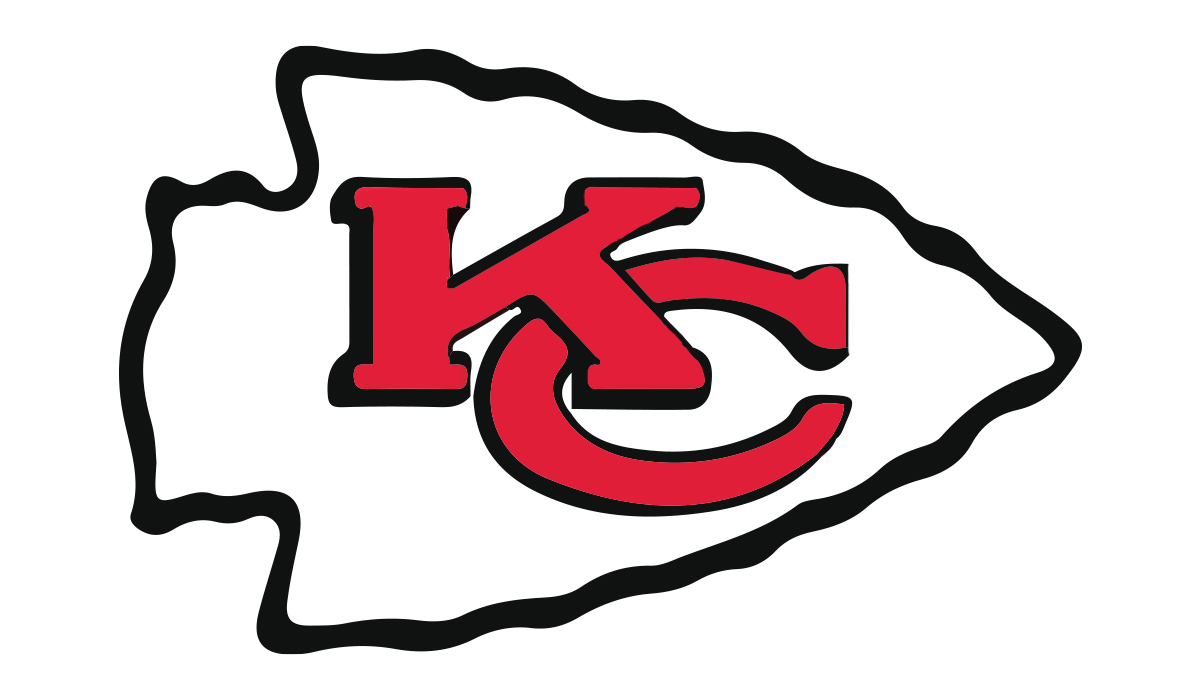















Leave us a comment